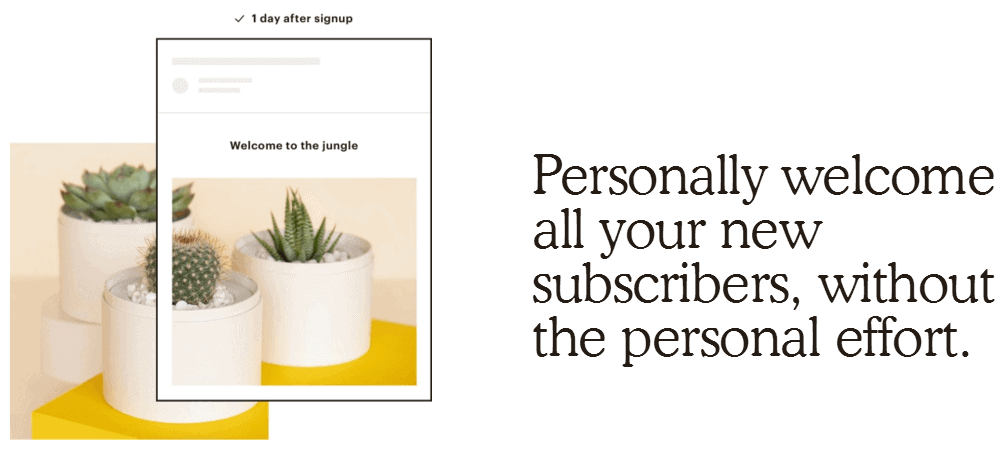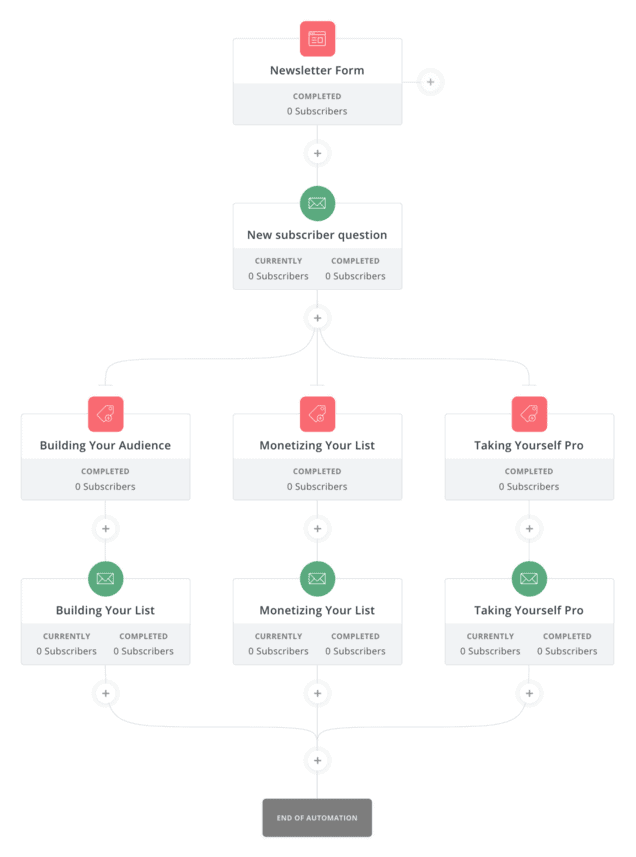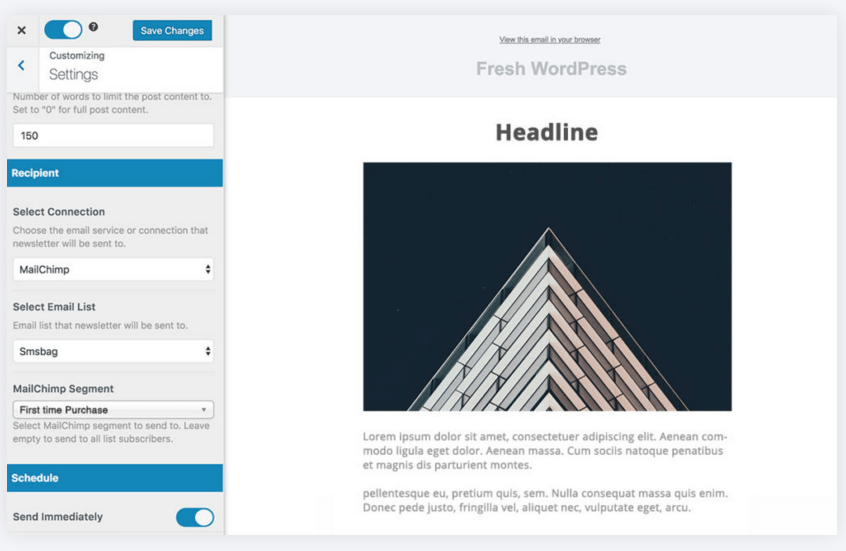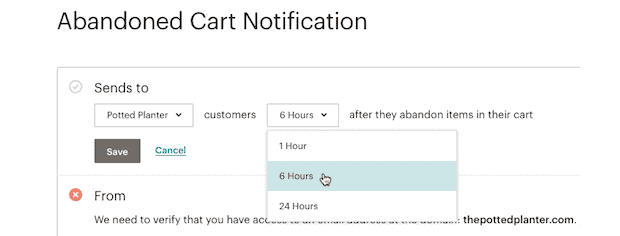How to Supercharge Your Email List with Marketing Automations
Email marketing is one of the most effective marketing strategies you can implement in your business, but only when done properly. It’s not enough to build a single list and send the same emails to everyone on it. You need a stronger approach.
There are much more strategic ways of handling your email list these days, and thanks to marketing automations, they aren’t difficult to deploy.
In this post, we’re going to cover some of our favorite marketing automations. We’ll cover what each automation does, how to implement it (especially with MailOptin) and what you can do with it.
Let’s get started.
What are Marketing Automations?
You can do a lot more with your email list than sending weekly newsletters to your entire list in one fell swoop. You can segment your list, for starters, and send targeted emails based on topics your subscribers are interested in. This is just one example of how useful automations are.
Marketing automations are processes you can implement in your email marketing strategy that take care of repetitive tasks for you. With the right automation, you can segment your main email list into two separate lists based on who’s purchased a product from you and who hasn’t.
It’s all done without you having to lift a finger and organize customers and potential customers into two different lists yourself.
Why are Marketing Automations Important?
The importance of automations is simple. They take processes you should already be implementing in your email list and handle them for you.
Many automations use an “if this/do that” operation you can implement without touching a single line of code when you use the right email marketing tools, MailOptin included.
The results can be extraordinary. Advertising has been a popular form of marketing for decades, ranging from billboards and expensive television commercials to online ads hosted by Google and social media platforms.
While advertisements can be effective, they’re expensive, force you to target a broad audience in many cases and require you to rely on third-parties to serve them.
Email marketing, in contrast, allows you to capture the leads you attract and nurture them into customers while spending less. It can even complement your content and ad marketing strategies.
When you throw marketing automations into the mix, you can nurture leads more effectively by targeting them with emails on content and products you know they’re interested in. This leads to higher open rates, click-through rates and yes, even conversions.
There are numerous automations you can implement depending on the tools you use, but we wanted to simplify things by listing a few of the most essential ones, starting with welcome emails.
Sending Welcome Emails

Welcome emails are one of the most popular automations available in email marketing. They’re also one of the more essential automations out there due to how effective and versatile they are.
There are so many different ways you can approach a welcome email. Start by determining your approach. Do you want to showcase the content in the email itself or redirect your new subscriber to a page on your site?
The latter option can help your email marketing strategy in the long run by training subscribers to click within your emails rather than just read them.
Next, determine how you’d like to welcome new subscribers. A popular way to encourage more readers to subscribe is to offer what’s known as a “lead magnet.” This is a free gift, such as an ebook, coupon code or resource list, you offer a reader in exchange for subscribing to your email list. In this case, your welcome email would focus around the distribution of this free gift.
You can also guide the subscriber to another part of your business or more content by encouraging them to follow you on social media, showcasing a few of your most popular or most essential blog posts, or even letting them know about upcoming events.
Lastly, you can offer them a simple “thank you” and a small guided tour. This means providing an overview of the different parts of your website, giving details on the types of products you offer, showing them what you get up to on social media and letting them know what they can expect from you on a weekly basis.
Just as a simple reminder, MailOptin’s lead generation features include welcome messages, and our forms integrate with services that allow you to create more intricate welcome emails.
Segmenting Your Email List

Many email marketing services these days allow you to segment your email list in multiple ways, and it’s done through automation. Kit (ConvertKit), for example, allows you to segment your list into “segments” and “tags” where you organize people into tags and organize tags into segments.
A popular way to segment your email list is to organize your subscribers into “Customers” and “Non-Customers.” You can organize each group even further with Kit (ConvertKit)’s tag system. For example, subscribers in the “Customers” segment can be organized into “Purchased Product A” and/or “Purchased Product B” tags.
Automation makes segmentation of this kind possible when you integrate the email marketing tools you use with your ecommerce solution. When you do, what you can accomplish with segmentation becomes endless.
Let’s say you want to create an online course similar to Product A. A highly effective way to validate a product idea is to sell an unfinished version of it at a discount.
This is known as a “beta course” when it comes to online courses. The idea is to gauge how profitable your course idea is before you spend time and money building a completed version of it.
Since you’ve already grouped paying customers into a tag related to your course idea, you can cut back on the amount of guesswork your marketing strategy uses by promoting your beta course to a group you know is interested in paying for things related to that topic.
Sending New Post Notifications & Newsletters

New post notifications and newsletters are among the most popular emails bloggers and marketers alike include in their email marketing strategies.
They’re also two types of emails you can send natively with MailOptin without needing to integrate your account with an email marketing service provider.
One of the biggest purposes of an email list is to drive more traffic to your content and product pages by promoting them to existing members of your audience. New post notifications and newsletters allow you to do just that, and you can automate them with the right tools.
With MailOptin, you can send an email to your subscribers every time you publish new content. The plugin supports custom post types alongside standard blog posts. You can also control which posts subscribers receive notifications for through the use of categories, tags and other custom taxonomies.
If you post often, you may want to switch to weekly newsletters. This allows you to send an email featuring all of the posts you publish on a weekly basis. Similar to new post notifications, MailOptin supports posts and custom post types while allowing you to restrict content based on categories, tags and other custom taxonomies.
Automating Ecommerce

This section is for WordPress users who operate any form of an online store on their sites, whether that means a dedicated online store or a few digital products you sell on your blog.
You can do a lot with ecommerce when you use it alongside an automated email marketing strategy. One of the most popular automated emails you can send with the right email marketing service is the abandoned cart email.
Using cookies on existing subscribers, you can send gentle email reminders to customers when they place items in their carts but don’t purchase them. While not a guarantee, it does increase your likelihood of receiving more sales.
You can also send follow-up emails after customers complete purchases. With these types of emails, you can thank customers for their business, provide tips on how best to use products, encourage customers to get in touch with support if they experience problems and even ask them to leave reviews.
The last automated email we’re going to mention is the product recommendation email. This type of automation uses segmented data based on the products customers purchase. You can use this type of automation to send regular product recommendations to customers that are similar to products they’ve already purchased.
Final Thoughts
All of these automations are useful, and there are even more available depending on the type of site you operate and the email marketing tools you use. It can be difficult to determine which ones you should implement in your email list.
You should definitely optimize your welcome email no matter what type of site you operate. It offers you a chance to introduce yourself and your business to your new subscriber, and you can even use it for additional promotion.
Segmentation is also important. Every email you publish will go to every member of your email list without it, which will only lead to low open rates and conversions since your audience naturally has a diverse range of problems and needs.
If you’re still in the process of starting an email list and find it too intimidating, consider starting with MailOptin. We offer beautiful forms and an intuitive email builder. Our new post notifications and newsletters are among the easiest ways to get started with email marketing.
